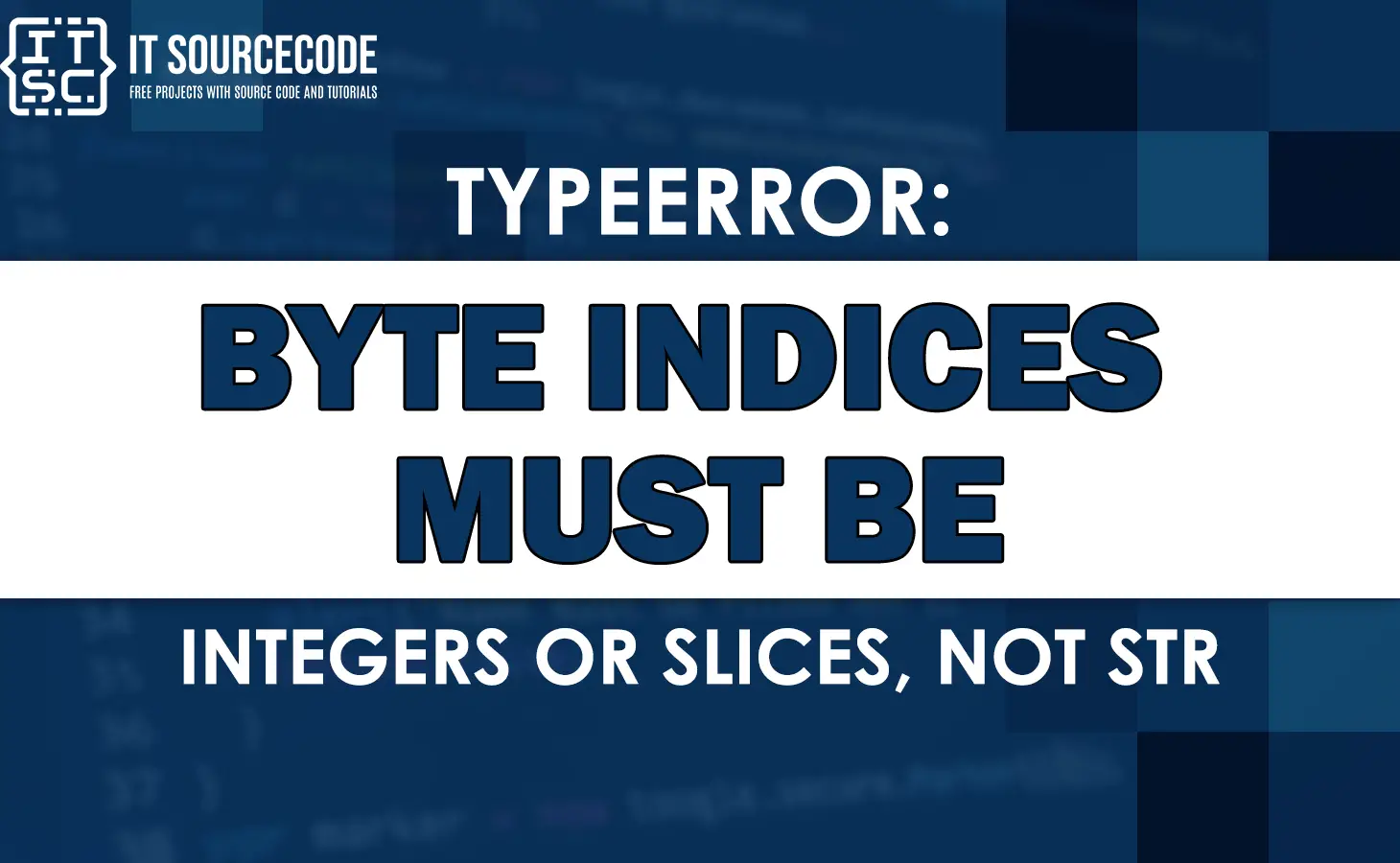The “typeerror byte indices must be integers or slices not str” is an error message that typically occurs in Python.
If you’ve encountered this error message, you’re probably wondering what it means and how to troubleshoot it.
If you are having a hard time dealing with the “byte indices must be integers or slices not str,” error, this article is your key to overcoming it. It is because…
In this article, we’ll explore the “typeerror: byte indices must be integers or slices, not str,” that will definitely help you troubleshoot the error.
What is the “typeerror byte indices must be integers or slices not str” error message?
The “typeerror byte indices must be integers or slices, not str” typically occurs because you are trying to use a string index on a byte object in Python.
In a nutshell, the “typeerror: byte indices must be integers or slices, not str” error message indicates that you’re trying to access a character in a byte object using a string index instead of an integer or slice index.
On the other hand, bytes objects are immutable sequences of single bytes and you can access individual bytes using integer or slice indices. Meanwhile strings are sequences of characters.
For example:
my_bytes = b'hello world'
my_bytes['0']
Output:
TypeError: byte indices must be integers or slices, not strAs a result, if you try to use a string index instead, you’ll get the “typeerror byte indices must be integers or slices, not str” error message.
In order to resolve this error, you’ll have to use an integer or slice object instead of a string to access the byte object.
How to fix “typeerror byte indices must be integers or slices not str”
Here are the following effective solutions that you can use to troubleshoot the error:
Solution 1: Convert the byte object to a string
Convert the byte object to a regular string using the .decode() method, and then use string indices to access individual characters.
Here’s an example code:
# Define byte string
byte_string = b"Hello, Welcome to Itsourcecode"
# Convert bytes to string
string = byte_string.decode("utf-8")
# Access first character of string
first_char = string[0]
# Print results
print("Byte String:", byte_string)
print("Regular String:", string)
print("First Character:", first_char)
Output:
Byte String: b'Hello, Welcome to Itsourcecode'
Regular String: Hello, Welcome to Itsourcecode
First Character: H
Solution 2: Use integer or slice indices
In this example, we use integer indexing to extract the first byte of the object and assign it to the variable “first_byte.”
We also use slicing to extract a portion of the bytes object and assign it to the variable “byte_slice.”
For example:
byte_object = b"678910"
# use integer index
first_byte = byte_object[0]
# use slice
byte_slice = byte_object[1:5]
print(f"First byte: {first_byte}")
print(f"Byte slice: {byte_slice}")
Output:
First byte: 54
Byte slice: b'7891'Note: When you need to index a byte object, you should use integer indices or slices.
Solution 3: Use a different data type
Use a different data type that supports string indexing, such as a regular string or a list. If you don’t need to work with binary data, this may be the simplest solution.
For example:
byte_string = b"ITSOURCECODE"
char_list = list(byte_string)
first_char = char_list[0]
print(char_list)Output:
[73, 84, 83, 79, 85, 82, 67, 69, 67, 79, 68, 69]
The byte string is then converted to a list of integers using the list() constructor and assigned to the variable char_list.
Solution 4: Use the struct module
In this example code, the byte string b”\01\02\03\04″ is assigned to the variable byte_string.
The struct.unpack() function is used to unpack the byte string into a tuple of 4 integers, which is assigned to the variable integer_tuple.
For example:
import struct
byte_string = b"\01\02\03\04"
integer_tuple = struct.unpack("4B", byte_string)
first_int = integer_tuple[0]
print(first_int)
The format string “4B” specifies that the byte string should be interpreted as 4 unsigned bytes.
Output:
1Solution 5: Convert the byte string to a bytearray
You can also convert the byte string to a bytearray using the bytearray() constructor.
A bytearray is a mutable sequence of integers, and supports both integer and slice indices as well as string indices.
For example:
byte_string = b"ITSOURCODE"
byte_array = bytearray(byte_string)
first_byte = byte_array[0]
print(first_byte)
Output:
73Additional solution:
When you are working with JSON data, ensure to load the data using the proper coding.
You should use json.loads(my_bytes.decode(‘utf-8’)) instead of json.loads(my_bytes).
For example:
import json
# Example byte string
my_bytes = b'{"name": "Anna", "age": 25, "city": "California"}'
# Decode the byte string to a string using utf-8 encoding, and then parse the JSON data using json.loads()
my_dict = json.loads(my_bytes.decode('utf-8'))
# Print the result
print(my_dict)
Out put:
{'name': 'Anna', 'age': 25, 'city': 'California'}Conclusion
By executing the different solutions that this article has given, you can easily fix the “typeerror byte indices must be integers or slices not str” error message in Python.
We are hoping that this article provides you with sufficient solutions.
You could also check out other “typeerror” articles that may help you in the future if you encounter them.
- Typeerror: path must be absolute or specify root to res.sendfile
- Typeerror: ‘response’ object is not subscriptable
- Typeerror: ‘str’ object cannot be interpreted as an integer
Thank you very much for reading to the end of this article.

